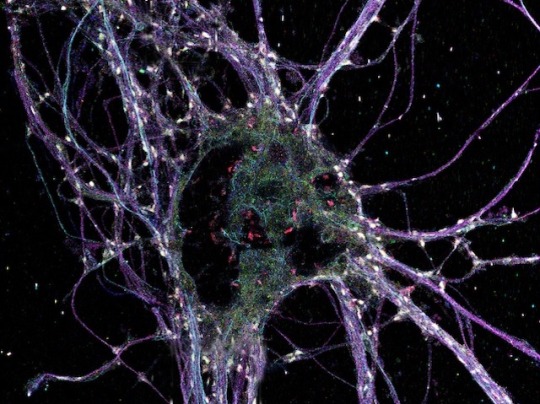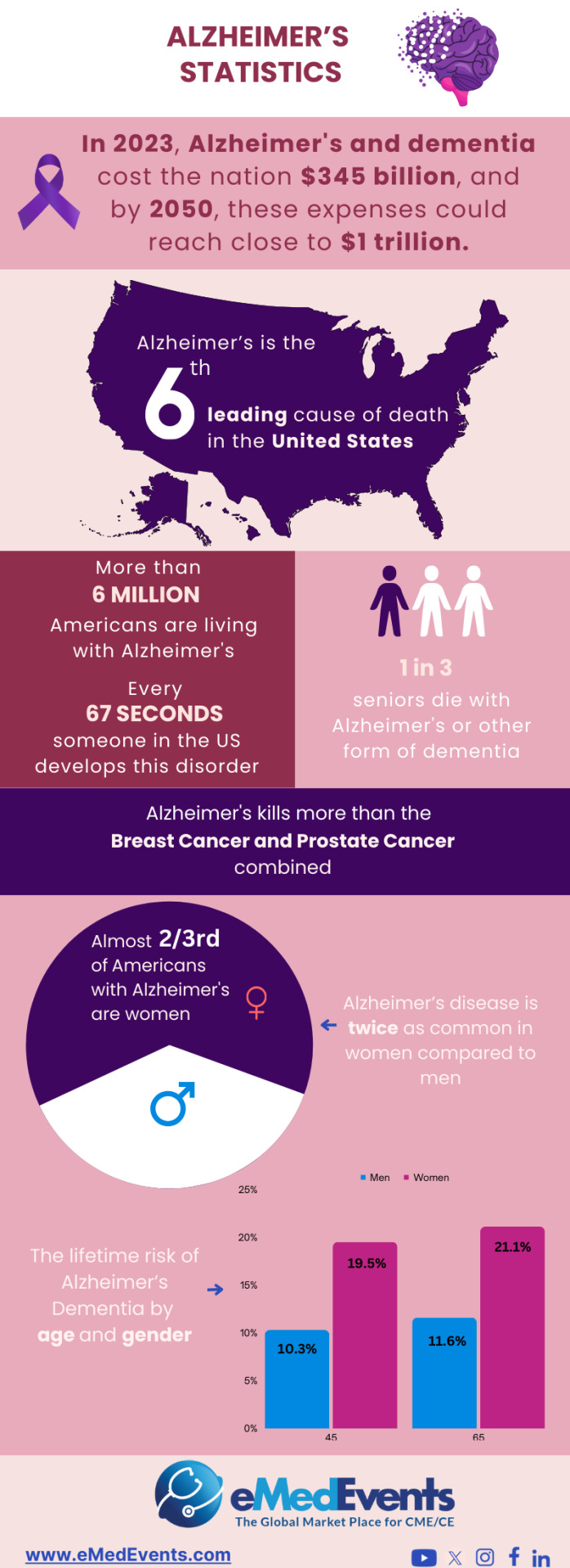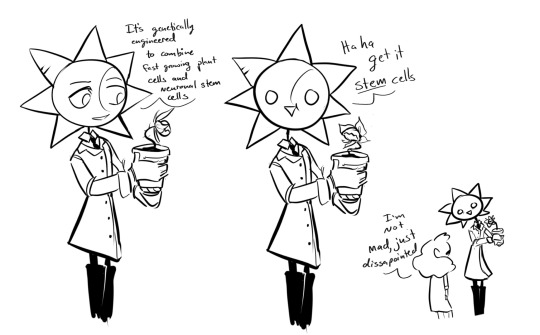#Neurodegenerative Disease
Explore tagged Tumblr posts
Text
There’s a renewed call for a public inquiry into why so many New Brunswickers have come down with neurodegenerative symptoms and illnesses.
When an initial cluster of over 40 people presented with similar symptoms – muscle spasms, atrophy and progressive dementia – it was thought to be Creutzfeldt-Jakob disease, until they tested negative.
That’s when a Moncton-based neurologist thought they could be experiencing an unknown brain disease. The cluster was initially focused in the Moncton and Acadian Peninsula areas of the province.
But after over a year of confusing back-and-forth for patients and their families, the province of New Brunswick halted further investigation by its federal counterparts, saying there was an explanation for each patients’ illness.
This week, New York Times Magazine released an article that calls that into question, citing that neurologist Dr. Alier Marrero believes the number of people seeking help with similar symptoms is now over 400.
It has sparked Green Party MLA Megan Mitton to call for a public inquiry into what happened internally between the province and Ottawa, as well as further testing, including environmental, to try and find patients some answers.
Full article
Tagging: @allthecanadianpolitics
#new brunswick#public health#neurodegenerative disease#neurodegenerative illness#neurological illness#neurological disease#healthcare#health#illness#mine#new brunswick news#canadian news#cdnpoli
135 notes
·
View notes
Text

Painting Proteins
To understand a huge ecosystem like a rainforest, you might need to watch a few individual species closely: which animal eats which, or how individual trees affect the surrounding area. At the cellular level, countless individual proteins interact in the same way, but these are even harder to track than animals in the jungle. A new protein-labelling approach, called SUM-PAINT, makes it possible, and researchers have created an atlas of brain cells at the level of individual molecules, tracking 30 different types of protein and unravelling the complexity of 900 synapses – junctions between cells. Looking at the whole system and individual brain cells (pictured, with snapshots of 30 proteins overlaid to show the cumulative complexity) the team discovered a new type of synapse, demonstrating a tool that they hope will help reveal hidden details of cell biology, and lead to new treatment approaches for neurodegenerative diseases.
Written by Anthony Lewis
Image from work by Eduard M. Unterauer, Sayedali Shetab Boushehri and Kristina Jevdokimenko, and colleagues
Max Planck Institute of Biochemistry, Planegg, Germany
Image originally published with a Creative Commons Attribution 4.0 International (CC BY 4.0)
Published in Cell, March 2024
You can also follow BPoD on Instagram, Twitter and Facebook
10 notes
·
View notes
Text
the description tk makes of what they might look at with huntington's disease is the daily life of someone with any kind of neurodegenerative disease. even parkinson. or alzheimer.
especially alzheimer.
i wasn't expecting it to trigger me, not after 15.5 years.
but it did.
and here i am, still crying about what could have been and thinking of what an absolutely amazing way of facing it could be "hi, you're tk, i'm carlos, and we're soulmates"
#that was my life for 17 years#with my grandma who had alzheimer#and it was hell#but it also was enlightening#i learned a lot#and it made me the woman i am today#i love you grandma#always and forever#up close and personal#911ls spoilers#911 ls spoilers#911 lone star spoilers#spoilers for 911 lone star s04e16#alzheimer#neurodegenerative disease
7 notes
·
View notes
Text
Lewy body disease: a complex dementia
Lewy body disease is a complex neurodegenerative disease that progressively affects cognitive function, movement and sleep. It is characterised by the presence of abnormal deposits of proteins called Lewy bodies in certain brain cells. These deposits disrupt the normal function of these cells, leading to a variety of symptoms.

What are the main symptoms of Lewy body disease?
The symptoms of Lewy body disease are varied and can change over time. Among the most common are
- Cognitive fluctuations: Intellectual abilities can vary considerably from one moment to the next, with periods of lucidity alternating with episodes of confusion or disorientation.
- Visual hallucinations: These hallucinations are often very realistic and can be frightening for the person experiencing them. They may take the form of people, animals or objects.
- Movement disorders: Similar to Parkinson's disease, movement disorders include tremors, muscle rigidity, slowness of movement (bradykinesia) and difficulty maintaining balance.
- Sleep disorders: People with Lewy body disease often suffer from REM (rapid eye movement) sleep disorders, manifested by agitated sleep behaviour, intense nightmares or nocturnal visual hallucinations.
- Behavioural problems: Mood swings, agitation, attention problems and conduct disorders may also occur.
How is Lewy body disease diagnosed?
Diagnosing Lewy body disease can be complex, as the symptoms overlap with those of other neurodegenerative diseases such as Alzheimer's and Parkinson's disease. Diagnosis is based on a combination of :
- The patient's medical history and symptoms.
- A detailed neurological clinical examination.
- Complementary examinations such as :
o Magnetic resonance imaging (MRI): to assess the structure of the brain and rule out other possible causes.
o Positron emission tomography (PET): to visualise protein deposits in the brain.
o Biological tests: to rule out other possible causes.
What is the treatment for Lewy body disease?
There is currently no cure for Lewy body disease. However, treatments can help to relieve certain symptoms and improve the patient's quality of life. Treatments are often tailored to each individual and may include:
- Medication to treat motor symptoms (such as levodopa for movement disorders) or cognitive problems (such as cholinesterase inhibitors).
- Psychological treatment to help patients and their families cope with the disease.
- Non-drug therapies such as physiotherapy, occupational therapy and speech therapy to maintain functional abilities.
Go further and contact
#dementia#neurodegenerative disease#alpha-synuclein#Lewy bodies#hallucinations#movement disorders#sleep disorders#diagnosis#treatment#quality of life
0 notes
Text
Top Neurology Care in Hyderabad | Expert Neurologists | Omega
Experience top neurology care in Hyderabad at Omega Hospitals. Our experts treat neurodegenerative diseases with advanced and compassionate care.
0 notes
Text
Amyotrophic Lateral Sclerosis Treatment: Current Perspectives on Amyotrophic Sclerosis Treatment

What is Amyotrophic Lateral Sclerosis Treatment? Amyotrophic lateral sclerosis (ALS), also known as Lou Gehrig's disease, is a progressive neurodegenerative disease that affects nerve cells in the brain and spinal cord. The motor neurons, which are responsible for controlling voluntary muscle movement, gradually die in people with ALS. When the motor neurons die, it becomes very difficult to control muscle movement and eventually the muscles weaken and waste away. ALS usually affects people between the ages of 40 to 70 years. About 5-10% of ALS cases are considered familial, meaning they run in families. Most ALS cases are sporadic with no known family history. Men are slightly more likely than women to develop ALS. It is estimated that about 20,000 Americans may have the disease at any given time. Symptoms of ALS typically include slurred speech, muscle weakness, twitching or cramping, difficulty swallowing or breathing, and impaired walking or use of arms and hands. Most people with ALS lose their ability to speak, eat, move, and breathe within 3 to 5 years of diagnosis. The disease progresses differently in each individual and life expectancy can vary widely, with some people living for up to 10 years or more after symptoms first appear. Unfortunately, at this time there is no cure for ALS. Current Treatment Options While there is currently no cure for Amyotrophic Lateral Sclerosis Treatment, some treatments can help manage symptoms and quality of life for people living with the disease. The most common drug treatments for ALS include riluzole, edaravone, and dextromethorphan/quinidine. Riluzole (Rilutek) was the first FDA-approved drug for ALS in 1995. It is believed to work by blocking glutamate, a neurotransmitter that appears to play a role in motor neuron death. Riluzole has been shown to modestly extend survival by 2 to 3 months on average. Side effects may include nausea, fatigue, and liver problems. Edaravone (Radicava) was approved in 2017 as the second drug shown to slow functional decline in ALS. Clinical trials found edaravone reduced motor function decline over 6 months compared to a placebo. It is believed to work as an antioxidant, protecting cells from free radical damage. Side effects are generally mild and may include bruising, headache, and edema. Dextromethorphan/quinidine (Nuedexta) received FDA approval in 2011 as an add-on treatment for pseudobulbar affect, a condition that causes involuntary and unpredictable laughing or crying episodes unrelated to a person's feelings or mood. While not a treatment specifically for ALS motor symptoms, it can help manage this distressing symptom that sometimes occurs with ALS. Common side effects include diarrhea, nausea, dizziness, and vomiting. In addition to medications, other treatments that may help manage ALS symptoms include physical and occupational therapy to maintain mobility and function for as long as possible. Speech therapy can help address swallowing and speaking difficulties. Respiratory therapy and mechanical ventilation support, such as non-invasive ventilation, may improve breathing problems and quality of life. Nutritional supplements or feeding tubes help address weight loss or difficulty swallowing. Braces, walkers, and wheelchairs provide mobility assistance as needed. Stem Cell and Amyotrophic Lateral Sclerosis Treatment Exciting new avenues of research are exploring the potential of stem cell and gene therapies for ALS. Several clinical trials are investigating various approaches with the goal of replacing lost motor neurons or protecting and preserving existing motor neurons. One promising area involves transplanting motor neuron progenitor cells, stem cells that can develop into motor neurons, directly into the spinal cord. Early phase trials have begun testing the safety and potential benefits of this approach. Another trial is looking at transplanting olfactory bulb stem cells, which naturally migrate to the brain, into the lumbar region of the spinal cord. Get more insights on Amyotrophic Lateral Sclerosis Treatment
Get More Insights—Access the Report in the Language that Resonates with You
French
German
Italian
Russian
Japanese
Chinese
Korean
Portuguese
Priya Pandey is a dynamic and passionate editor with over three years of expertise in content editing and proofreading. Holding a bachelor's degree in biotechnology, Priya has a knack for making the content engaging. Her diverse portfolio includes editing documents across different industries, including food and beverages, information and technology, healthcare, chemical and materials, etc. Priya's meticulous attention to detail and commitment to excellence make her an invaluable asset in the world of content creation and refinement.
(LinkedIn- https://www.linkedin.com/in/priya-pandey-8417a8173/)
#Amyotrophic Lateral Sclerosis Treatment#ALS#Lou Gehrig's Disease#Neurodegenerative Disease#Motor Neuron Disease#Muscle Weakness#Muscle Atrophy
0 notes
Text
All I want for Christmas
Being sick isn’t fun for anyone but as a person with a neurodegenerative disease having something as simple as a cold can be tough. In my daily life I have these things that I call twitches, their not easy to describe but I feel something along the lines of a jolt of electricity in a random nerve that causes the subsequent muscle to freak out and involuntarily move. Thus twitch. Most of the time…

View On WordPress
0 notes
Text

Recent Insights in Alzheimer Research |
Discover the latest insights into Alzheimers research, shedding light on advancements in diagnosis and treatment.
#Alzheimer's#dementia#x27;s disease#neurodegenerative disease#x27;s research insights#x27;s research#Neurological Biomarkers#Tau Protein#FDA-Approved Drugs#Nanotechnology#CME Programs#CME Conferences#CME Medical courses#CME credits#doctor conferences#medical CME#Primary Care Conference#Medical CME Online#Emergency Medicine Online CME#Medical Conference Website#Physician Conferences#Medical CME Courses#Doctors CME Conferences#CME training for Physicians#Medical Event Organizer#Organizing Medical Events#Medical Conferences#Medical Speakers#Healthcare Marketplace
0 notes
Text
Grasping the Intricacies of Alzheimer's Disease Type 3: An Exploration of Its Causes, Symptoms, and Therapeutic Measures
Breaking Down Alzheimer’s Disease Type 3: An Initial Approach In the following exhaustive piece, we delve into the depths of Alzheimer’s Disease Type 3, also identified as Type 3 diabetes or brain insulin resistance. We’ll dissect the triggers, the associated risks, the revealing symptoms, the steps towards a proper diagnosis, the treatment choices available, changes in lifestyle, effective…

View On WordPress
#Advances in Treatment#Alternative Therapies#Alzheimer&039;s Disease Type 3#Alzheimer&039;s Type 3#Brain Insulin Resistance#caregiver support#caregiving tips#cognitive decline#Cognitive Impairment#Coping Strategies#Diagnostic Procedures#Diet and Nutrition#early detection#Genetic Factors#Glucose Metabolism#lifestyle modifications#Long-term Effects#Medications#memory loss#Neurodegenerative Disease#Ongoing Research#Physical Exercise#Prognosis#Research on Alzheimer&039;s Type 3#Resources for Alzheimer&039;s Type 3.#risk factors#support groups#symptoms#treatment options#Type 3 Diabetes
0 notes
Text
Type 3 Diabetes and what does that mean
Have you ever heard the term ‘Type 3 Diabetes’ in reference to Alzheimer’s disease? Have you wondered what that even means? In today’s episode of The Truth, Lies, & Alzheimer’s Show, Lisa shares why some researchers are calling Alzheimer’s disease a ‘Type 3 Diabetes’ and explains why insulin resistance is linked to neurodegenerative disease (Alzheimer’s), and how it affects the body and…

View On WordPress
#Alzheimers Symptons#Caregiver Advocate#Lisa Skinner#Lisa Skinner International Speaker#Neurodegenerative Disease#Type 3 Diabetes
0 notes
Text




AMELIA SHEPHERD
— in Grey's Anatomy 20.01 - We've Only Just Begun
You told me to say whatever's in my- I'm sorry! It's making me think that maybe Meredith isn't insane.
#amelia shepherd#ameliashepherdedit#grey's anatomy#greysanatomyedit#greysedit#gaedit#caterina scorsone#laurealagifs#ga: 20x01#tvarchive#dailytvgifs#dailytvwomen#tvedit#tvgifs#ameliabyepisode#meredith and amelia are like let's cure every neurodegenerative disease ever#still continuously losing with this show but i've accepted it. kind of. will just keep giffing amelia
109 notes
·
View notes
Text
A spectrum of neurodegenerative diseases, including frontotemporal dementia (FTD), progressive supranuclear palsy (PSP), and corticobasal degeneration (CBD) are due to the accumulation of abnormal, misfolded tau proteins in the brain. A team of researchers has found potential ways to interrupt this process by targeting “sticky” sites along the long form of mutated tau, preventing the misfolding and spreading of the neurofibrillary tangles.
Continue Reading.
62 notes
·
View notes
Text
Mutation Walk
Discovery of a novel gene mutation associated with the inherited nervous system disease CMT; a fruit fly model with the mutation has gait problems reflecting those of CMT patients and reveals the molecular mechanisms underlying the peripheral nerve degeneration
Read the published research article here
Video from work by Jui-Yu Yeh and colleagues
Graduate Institute of Physiology, National Taiwan University, Taipei, Taiwan
Video originally published with a Creative Commons Attribution 4.0 International (CC BY 4.0)
Published in EMBO Molecular Medicine, April 2024
You can also follow BPoD on Instagram, Twitter and Facebook
9 notes
·
View notes
Text
Did you know. Even if you stop drinking alcohol. You can still drink so much non-alcoholic beer you throw up from acid reflux. Anyway I'm too old to kin fictional characters but some part of me...some part of me does admittedly feel a deep and abiding kinship with Daniel Molloy
22 notes
·
View notes
Text






Woot woot more mad scientist au doodles!
Credit to @oobbbear
Another doodle under the cut (its my favorite but its gory so be warned)

#I imagine sun and y/n have known eachother since undergrad#they went their separate ways since sun pursued a phd while yn went directly into the workforce#eventually they met back up while sun was setting up his lab at the university since he needed a lab tech#also personal aside#I can't believe they purposely make the introductory courses for premed ridiculously hard to purposely 'cull' those they don't think#are 'worthy'#thats some elitist fruckign aaaaaa#any way#sun teaches in the intro bio class lol cause he works with plants#also woops i added the glamrocks#freddy's the PI with the others as his grad students#they work with neurodegenerative diseases#luckily one of them is morally dubious enough to let sun use their equipment#maaaaan if anyone found out about this they'd be in suuuper big trouble#good thing that will never happen#sundrop#moondrop#fnaf sun#fnaf moon#mad scientist au#aaa have more planned but things are heating up i have so much less free time aaaaaa#I need to stop putting stuff in the tags ive had to rewrite this 3 times now#tw gore#tw body horror#my art#fanartception
488 notes
·
View notes
Text
having a hypochondriac moment pray for me babes
#keep feeling like my muscles are weird? like some kind of tremors???#specifically if I turn my head one way sometimes it feels like my head is shaking a tiny bit#which -- I cannot stress this enough -- is probably normal#but it made me hyperaware now and I feel like I have some kind of tremor from neurodegenerative disease 😭#and like I can't walk normally and none of my muscles are normal#psychosomatic nonsense is... fun#and by fun I mean miserable 👍#Lu rambles#the hypochondriac blues
21 notes
·
View notes